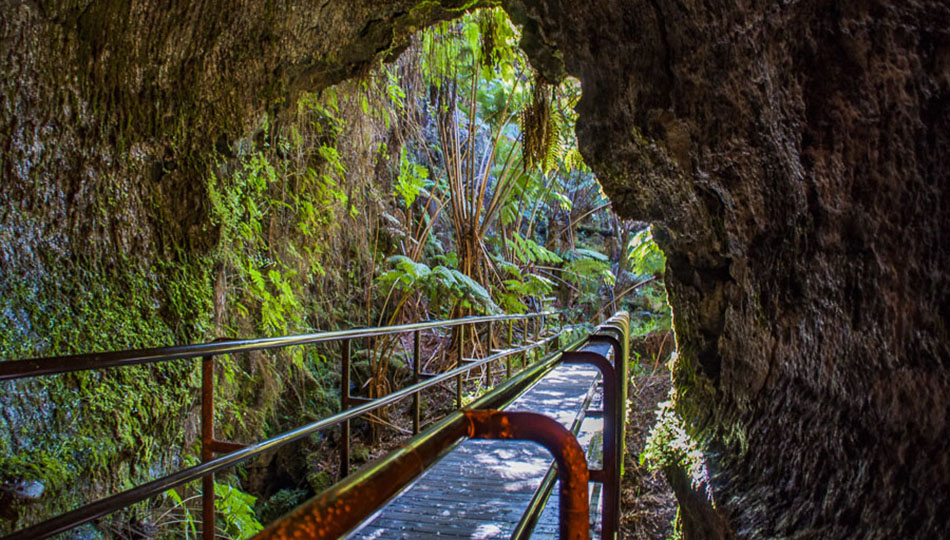Complete Hawaii Volcano & Lava Viewing Guide
Experience the Big Island’s volcanic activity, a miracle of nature that isn’t found elsewhere on planet Earth. Hawaii provides incredible access to see the red glow of molten lava.

One of the main attractions in the entire state of Hawaii is Hawaii Volcanoes National Park. With its more than 300,000 acres and incredibly diverse geography, the park offers plenty of opportunity for adventure for those who seek it out.

The main attractions in the park include the Volcano Visitor Center, Halema’uma’u Crater, Thurston Lava Tube, and the sites along Chain of Craters Road, but there’s plenty to explore in between. In fact, the park is open 24/7, allowing visitors to stretch their legs and embark on adventures without worry. So if you’re planning to do some exploring around the park and want to sleep under the starry night sky, read on.

Campsite Information
If you’re planning to stay within the park itself, know that there are two campgrounds and you will have to pay the park entry fee of $30/car as well as paying the camping site fee $15 – $20 depending on the site (more if you rent a tent or cabin). Spots are limited and these campgrounds do fill up.
Namakanipaio Campground
Hawaii Volcano House – Campground Operator
808-756-9625
Website
The Namakanipaio campground is located within the park at around 4000 ft elevation, in a eucalyptus forest. There are three lodging options; you can rent one of 10 camper cabins, rent a tent and camp site, or bring your own tent and just rent a campsite. Campers in the cabins or rented tents can use the community bathroom with hot showers and toilets, while DIY campers have access to a restroom, but no showers. Both tent camping groups have a 7 day max stay. Barbecue grills are available in designated areas. View the Hawaii Volcano House website for pricing and additional information.
Kulanaokuaiki Campground
National Park Website
The Kulanaokuaiki Campground can be found about 5 miles down the Hilina Pali Road. It is located at 2700 ft elevation and can have night time temperatures as low as the high 40s, so pack for colder weather. There are only nine designated campsites here and they are rented on a first come basis. They have picnic tables and tent pads, but there is no running water, and pets and fires are not permitted. There is a vault-type toilet. Checkout time is 11:00 am with a 7 day max stay.

Pack Well, Pack Warm
The park is stunningly diverse, with altitudes spanning between near-sea level to an astonishing 13,678-foot summit at Mauna Loa. You’ll see expansive lava fields, volcanic formations, active lava flows, staggering cliff sides, apocalyptic craters, lush rainforests, and wide open deserts, so preparing for any and every climate is a wise move. If you plan to stay in the park, note that the elevation at either campground is higher and therefore more susceptible to rainfall and cooler temperatures, so throwing in a raincoat, warm clothes and tarp for your tent would be a smart decision.

Surface flows have not been active outside of the crater area throughout most of 2024. Exposed molten lava has primarily been visible in the caldera in short on and off eruptions since the larger 2018 eruption ended. Camping in the park allows you to visit active flows more easily at night or just before dawn (when there is activity). This can help you avoid the heat of the day as well as the busiest times at the viewing areas. Because the ample sunlight can obscure all or most of the visible lava and glow during the day, many visitors prefer to view lava flows at the beginning or end of the day to maximize their viewing experience and enjoy the cooler-temperatures.
The park is widely accessible by car, but there’s an extensive network of hiking trails to explore throughout your stay. Keep your hiking boots ready, but don’t be afraid to drive between trails and sites. If you’re planning to hike in the park, your feet will thank you if you drive as far as the trail access points. Conditions change frequently and viewing areas shift, so check with a park ranger before you head out, but it’s typically a bit of a hike from the parking areas to most of the park’s best sites or active flows.
Experience the Big Island’s volcanic activity, a miracle of nature that isn’t found elsewhere on planet Earth. Hawaii provides incredible access to see the red glow of molten lava.
The ideal destination for those seeking adventure near Hawaii Volcanoes National Park, Hauoli Place is a beautiful, fun, and comfortable stay.
An adults-only bed and breakfast, this luxury retreat offers ultimate privacy and relaxation for a pampered stay on the Big Island.